This post may contain affiliate links. Please read our disclosure policy.
Perfectly sweet, with a soft and moist crumb, this pandan coconut bread is infused with fresh pandan leaves and rich coconut milk for floral notes and a hint of nuttiness. Bonus: it’s gluten-free and can be made without any refined sugar!
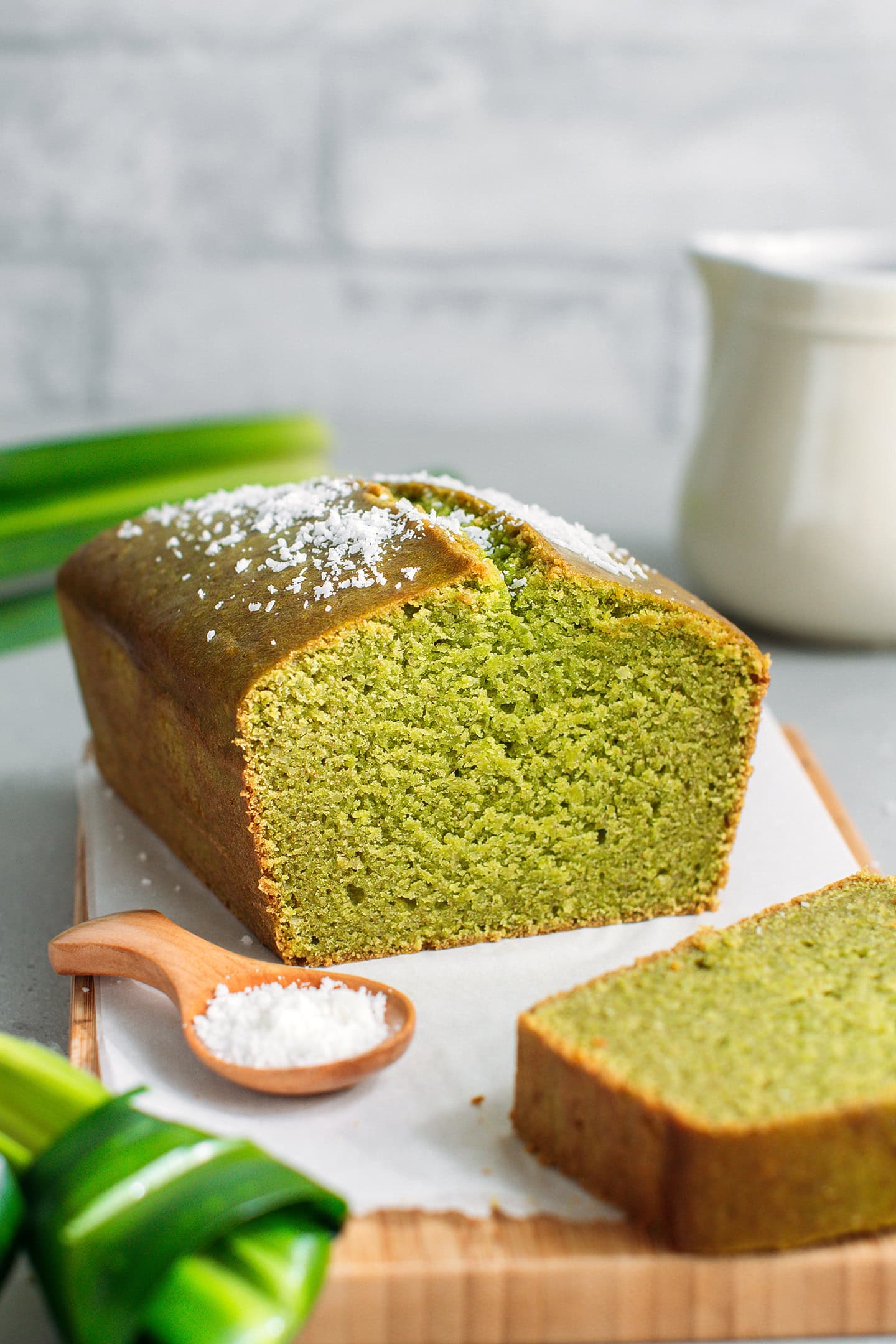
Looking for something different than your classic pound cake or banana bread? Say hello to this vibrant green bread infused with real pandan leaves!
If you have never heard of pandan, think of it as the vanilla of Southeast Asia. Except that it’s greener, grassier, and with undertones of almond. It’s floral, nutty, and so unique. I know that the first time I tried it, I loved it!
For this recipe, you will make pandan milk and incorporate it into a gluten-free cake batter. The result? A soft, moist loaf with a natural green color and a delicate floral aroma. And yes, the bread shown in the photos was made only with fresh pandan leaves. No extract, no food coloring!
Update: I have recently reworked this recipe. It now packs even more pandan flavor, and I have slightly adjusted the measurements for an even better texture.
💬 Why I Think You’ll Love It
Fresh and fragrant.
This bread is like no other. Forget about vanilla, chocolate, or caramel. Pandan is the new trendy kid in town!
There is something really unique about pandan that I somehow cannot pinpoint. At first, you might think it just smells/tastes grassy, but once you mix it with creamy coconut milk and the right amount of sweetness, magic happens. It develops an addictive flavor that I would describe as a blend of roasted almonds, rose, jasmine, and freshly cut grass. I told you, quite unique, but SO tasty!
You would never guess it’s gluten-free.
I’ve tasted dozens of gluten-free cakes over the years, and most of them left me disappointed. Too dry, too grainy, weird aftertaste, etc. But this one? Totally different!
I played around with different flour blends and ratios until I landed on a combo that gives you a soft, non-grainy, and moist crumb. Oh, and no flax egg, applesauce, or gums needed! Just a simple mix of three flours and one starch. That’s it!
Simple ingredients. Easy process.
Aside from the pandan leaves, which you will likely need to grab from your local Asian grocery store, the other ingredients are simple and easy to find.
To start, blend the pandan leaves with the liquid ingredients: coconut milk for flavor and richness, maple syrup for sweetness, and some oil to keep the bread moist. Once smooth, strain out the pandan pulp and pour the pandan milk into the dry ingredients. Mix it all up, transfer to a loaf pan, and you are ready to bake!
About 40 minutes later, you end up with a vibrant green pandan bread that smells absolutely heavenly!
🥥 Ingredient Details
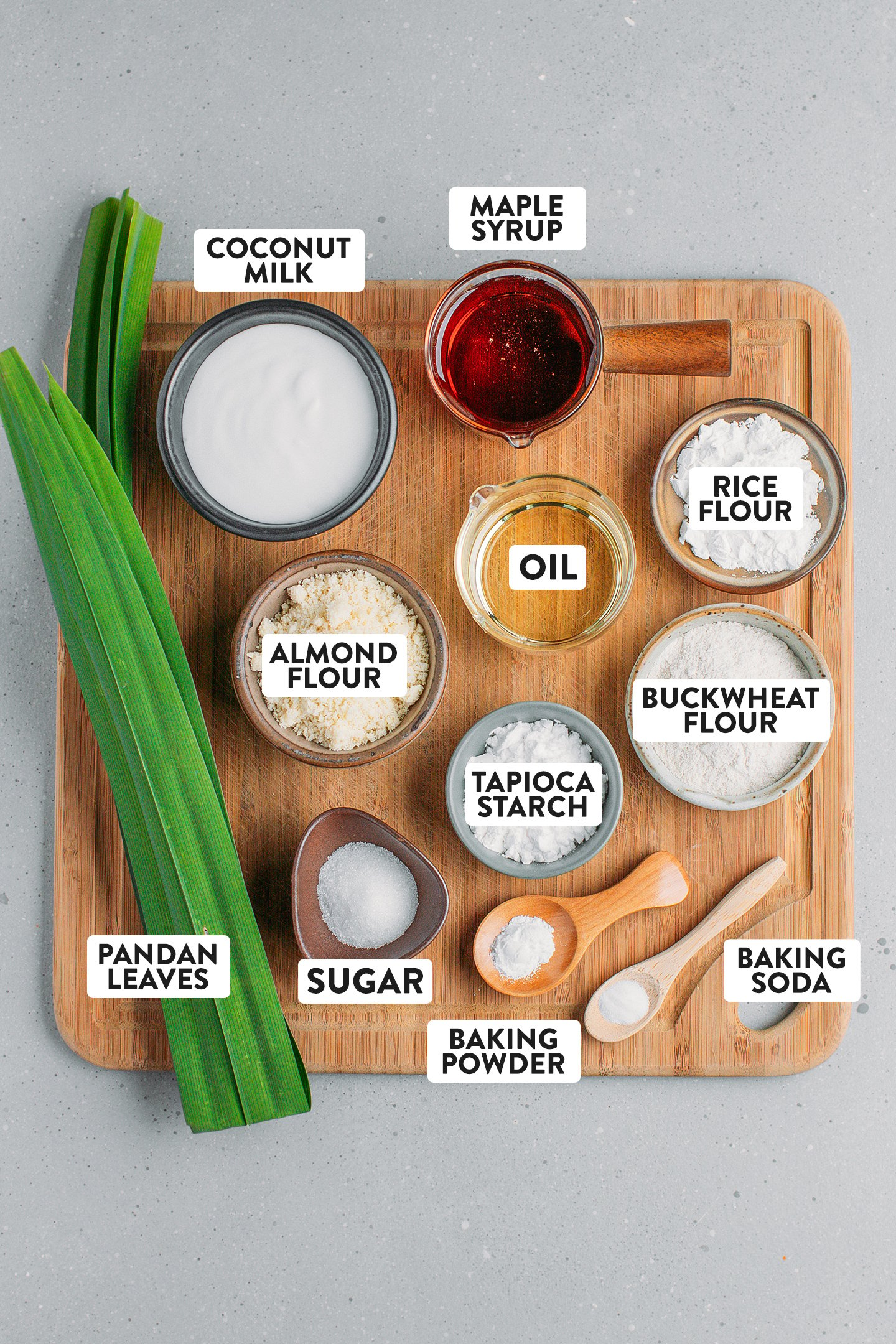
Pandan leaves
To infuse the bread with a ton of pandan flavor, you will need fresh pandan leaves.
What’s pandan? Also known as pandanus, pandan is a tropical plant mainly used for its long and vibrant green leaves. They are commonly used in Asian desserts, and sweets like banh da lon, for example, but can be used in savory dishes as well.
What does it taste like? Pandan has a unique and hard-to-describe flavor. While it’s often compared to vanilla, I believe it tastes more like jasmine than vanilla. It has deep floral notes and tastes like a mix of grass, coconut, and almond with a natural sweetness!
Leaves vs. extract
You can use either fresh leaves or pandan extract for this recipe. I personally prefer using fresh leaves as they bring a fresher flavor and a more natural color. Pandan extract works too, but keep in mind that it has a slightly nuttier, almost almond-like taste and gives the bread a more vibrant green color, which can look a bit less natural.
How many leaves to use? For one batch, you will need about 8 leaves. For reference, the leaves I used here weigh approximately 7g each. So, in total, you will need roughly 57g of leaves.
Where to buy: Usually, pandan leaves are available in the refrigerated section of most well-stocked Asian supermarkets. For pandan extract, check the spice or baking aisle at Asian grocery stores or buy it online.
Coconut milk
Full-fat coconut milk brings richness and a delicate nutty aroma that pairs wonderfully with the pandan. I advise against using light coconut milk, as your bread would not be as moist.
Maple syrup
I picked maple syrup to keep the bread mostly free of refined sugar.
Sugar
You will need just one tablespoon. I generally use coconut sugar, but since I was out of it at the time I took the photos, I used granulated sugar instead. Both work great!
Note: Keep in mind that this bread is mildly sweet, so if you have a sweet tooth, I would suggest increasing the amount of sugar.
Almond flour
Gluten-free baked goods can be grainy or dry, but not here! To create a thin, moist, and tender crumb, I rely on a unique combination of flours. The first of those is almond flour. It adds richness and helps keep the bread nice and moist.
Note: Use almond flour, not almond meal. The latter is made from whole almonds and is not as fine.
Buckwheat flour
Next comes buckwheat flour, which I use in combination with white rice flour to give the bread structure.
For this recipe, you want to use buckwheat flour made from hulled buckwheat groats. As opposed to flour made from whole groats, this one is lighter in color and resembles wheat flour.
Where to buy: You can buy buckwheat flour online (the one from Anthony’s is the hulled kind) or in most organic supermarkets.
Rice flour
You want to use white rice flour, not sweet rice flour.
Tapioca starch
Last on the list of flours, tapioca starch! It binds everything together and gives the crumb a slightly lighter texture.
Baking powder & baking soda
Because this bread is entirely vegan and obviously free of eggs, you will need both baking powder and baking soda to help it rise properly and give it a fluffier texture.
🥣 Step-by-Step Instructions
- Blend the pandan leaves. Add the full-fat coconut milk, maple syrup, and oil to a blender. Use a pair of scissors to slice the pandan leaves into 2-inch (5 cm) slices. Add them to the blender and blend on high speed for about 1 minute. Let it sit for about 5 minutes so the liquid can absorb the flavor of the pandan leaves.
- Strain the pandan milk. Next, strain the liquid through a fine-sieve mesh to remove the pandan “pulp” and discard it. You now have your pandan-flavored liquid mixture!
- Whisk together the dry ingredients. To a large mixing bowl, add the almond flour, buckwheat flour, rice flour, tapioca starch, coconut sugar, baking powder, and baking soda. Whisk until well combined.
- Pour the wet ingredients into the dry ones. Pour the liquid pandan mixture into the dry ingredients bowl. Mix using a wooden spoon until it forms a smooth and thick batter. It should have the consistency of a thick pancake batter.
- Transfer to a loaf pan. Line an 8×4-inch (20×10 cm) loaf pan with parchment paper. Next, pour the batter into the pan.

Thomas’ Secret Tip
If you want your bread to crack evenly across the center, I’ve got a tip for you! Dip a spatula in oil and then gently draw a line lengthwise across the top of the batter. It doesn’t have to be very deep, just 1/2-inch (1.3 cm) is enough. Alternatively, you can pipe a very thin line of softened butter down the middle of the cake.
That’s it! This little trick helps guide the crack so it develops right in the center, giving it a better look. No more random cracks on the sides!
- Cover with foil. Loosely cover the loaf pan with aluminum foil. This will prevent the top from browning too quickly.
- Bake. Bake the bread covered with the foil for 15 minutes. Then, carefully remove the foil and continue baking for another 25-27 minutes or until the top looks slightly golden brown and a toothpick inserted in the center comes out clean.
- Let it cool. Let the bread cool for at least 15 minutes before removing it from the pan.
📔 Tips
Cover loosely with foil.
To prevent your bread from browning too quickly on top, it’s essential to cover it loosely with foil during the first 15 to 20 minutes of baking. I also suggest baking it in the lower rack of your oven. Otherwise, the top will brown too much and will end up tasting bitter.
Do not overbake.
Make sure you don’t overbake the bread. You still want it soft and moist and not too golden brown on the edges. I found a total of about 40 minutes to be just right, but you might have to adjust the baking time slightly depending on your oven.
🍫 Variations
Looking to tweak this pandan bread? Here are a couple of ideas:
- Chocolate chip: Add extra sweetness by incorporating about 1/2 cup of vegan white chocolate chips or dark chocolate chips into the batter.
- Top with shredded coconut: Right after the bread comes out of the oven, brush the top with maple syrup and then sprinkle on some shredded coconut. The maple syrup will help the coconut stick to the bread.

🍵 What to Enjoy It With
Serve this pandan bread for breakfast with some almond milk yogurt or spread on some vegan butter or almond butter. It also makes a great dessert, paired with vanilla ice cream or a drizzle of vegan custard sauce!
❄️ Storing and Freezing
- To store: You can store this bread for up to 3 days at room temperature, either in an airtight container or wrapped in cling film.
- To freeze: Wrap each slice in plastic wrap and freeze for up to 3 months. Thaw for a few hours at room temperature.
💬 FAQs
First, ensure that the pandan leaves you are using are fresh. They should have a deep green color and look glossy on one side.
If you want a greener color, you can add about 1/4 teaspoon of pandan extract as well. It contains green coloring that will give your bread a more vibrant color.
You may have baked it too long or didn’t measure the ingredients correctly. I suggest using metric measurements next time or reducing the baking time slightly.
The batter should have the consistency of a pancake batter. It’s thick but still pourable.

This pandan coconut bread is very flavorful, moist, soft, and not overly sweet! It goes perfectly with tea or coffee but is also great as a mid-morning/afternoon snack. Hope you will love it!
⭐️ Did you like this recipe? Let us know in the comments below, and tag us on Facebook, Instagram, or Pinterest!
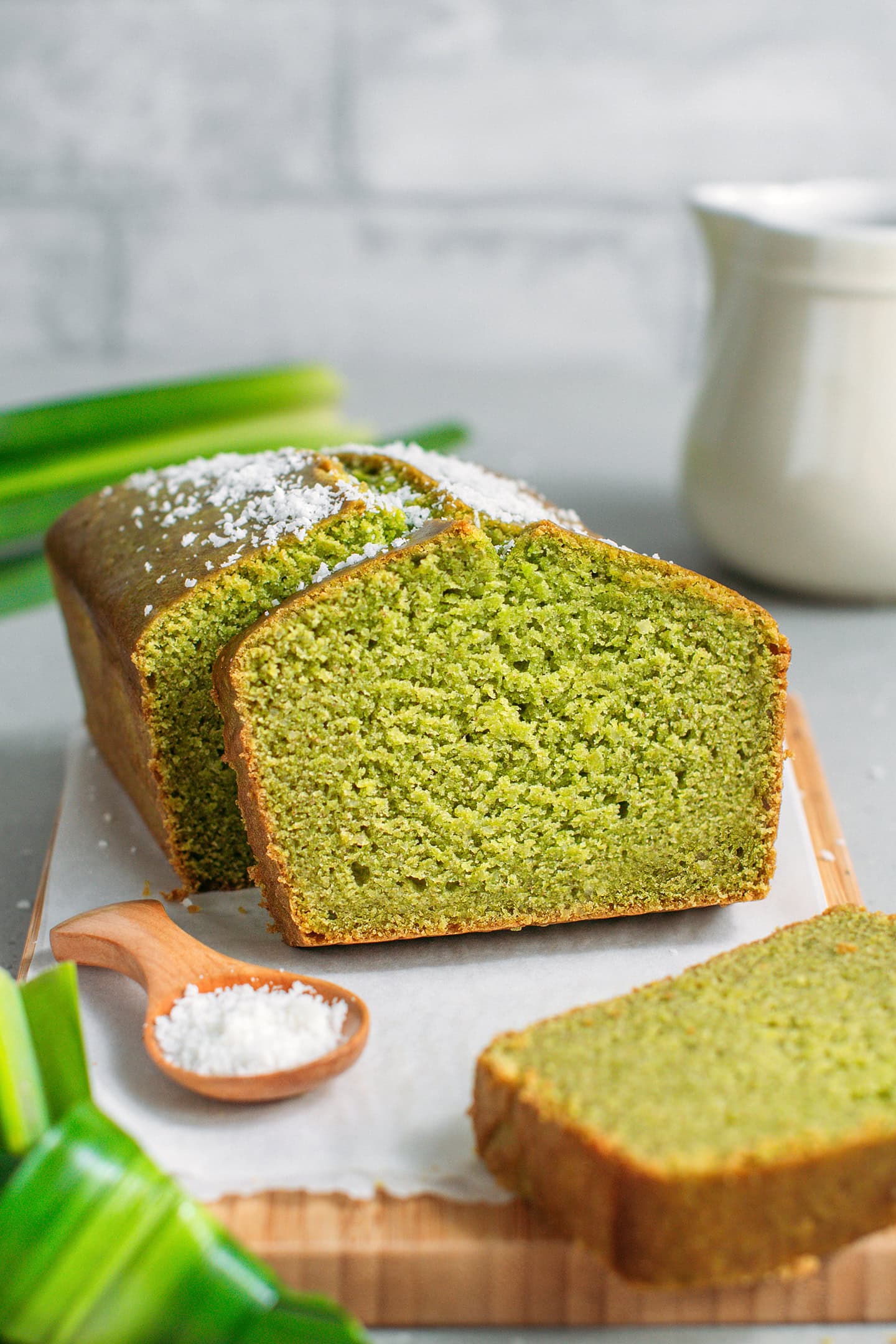

Want to Save This Recipe?
Enter your email below & we’ll send it straight to your inbox! Plus, you will receive new recipes every week!
I’d like to receive more tips & recipes from Full of Plants.
This site is protected by reCAPTCHA and the Google Privacy Policy and Terms of Service apply.
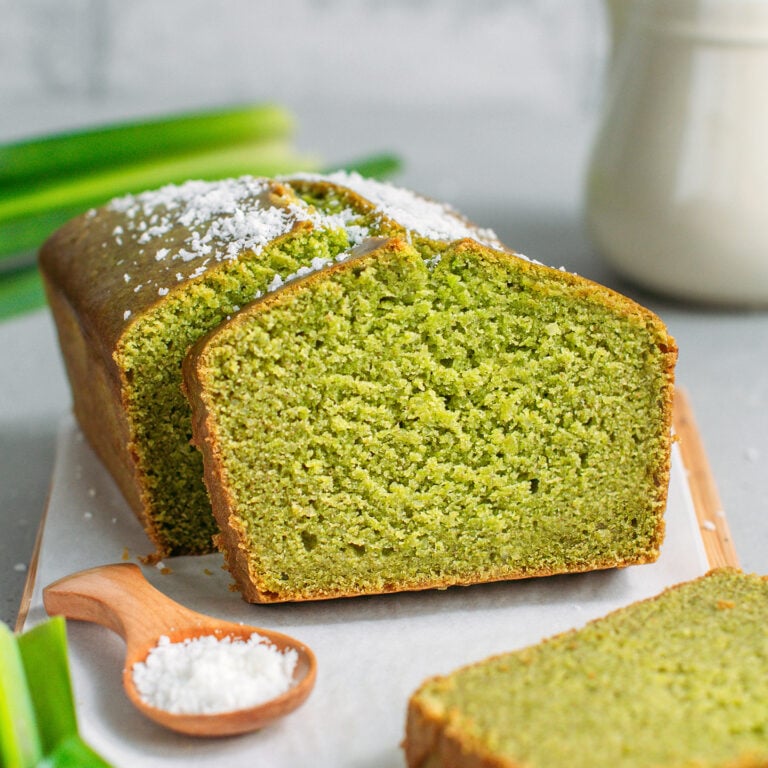
Pandan Coconut Bread (Vegan + GF)
Equipment
Ingredients
- 1 cup (240 ml) full-fat coconut milk
- 1/2 cup (120 ml) maple syrup
- 1/3 cup (80 ml) neutral oil or melted coconut oil
- 8 (57 g) large pandan leaves
- 1 cup (96 g) almond flour
- 3/4 cup (115 g) buckwheat flour
- 1/2 cup (60 g) rice flour
- 1/4 cup (30 g) tapioca starch
- 1 tbsp (7 g) coconut sugar
- 1/2 tsp baking powder
- 1/4 tsp baking soda
Instructions
- Preheat oven to 350 °F (175°C).
- Blend the pandan leaves. Add the full-fat coconut milk, maple syrup, and oil to a blender. Use a pair of scissors to slice the pandan leaves into 2-inch (5 cm) slices. Add them to the blender and blend on high speed for about 1 minute. Let it sit for about 5 minutes so the liquid can absorb the flavor of the pandan leaves.
- Strain the pandan milk. Next, strain the liquid through a fine-sieve mesh to remove the pandan “pulp” and discard it. You now have your pandan-flavored liquid mixture!
- Whisk together the dry ingredients. To a large mixing bowl, add the almond flour, buckwheat flour, rice flour, tapioca starch, coconut sugar, baking powder, and baking soda. Whisk until well combined.
- Pour the wet ingredients into the dry ones. Pour the liquid pandan mixture into the dry ingredients bowl. Mix using a wooden spoon until it forms a smooth and thick batter. It should have the consistency of a thick pancake batter.
- Transfer to a loaf pan. Line an 8×4-inch (20×10 cm) loaf pan with parchment paper. Next, pour the batter into the pan.
- Cover with foil. Loosely cover the loaf pan with aluminum foil. This will prevent the top from browning too quickly.
- Bake. Bake the bread covered with the foil for 15 minutes. Then, carefully remove the foil and continue baking for another 25-27 minutes or until the top looks slightly golden brown and a toothpick inserted in the center comes out clean.
- Let it cool. Let the bread cool for at least 15 minutes before removing it from the pan.
- You can store this bread for up to 3 days at room temperature, either in an airtight container or wrapped in cling film.
Notes
Cover loosely with foil.
To prevent your bread from browning too quickly on top, it’s essential to cover it loosely with foil during the first 15 to 20 minutes of baking. I also suggest baking it in the lower rack of your oven. Otherwise, the top will brown too much and will end up tasting bitter.Do not overbake.
Make sure you don’t overbake the bread. You still want it soft and moist and not too golden brown on the edges. I found a total of about 40 minutes to be just right, but you might have to adjust the baking time slightly depending on your oven.Nutrition
Note: This recipe was first released in April 2019 and updated with new process shots and detailed instructions in August 2025. You can see the older photos below.

About the Author
Thomas Pagot is the founder, photographer, and recipe developer behind Full of Plants. He created the blog in 2016 as a personal cookbook for vegan recipes. Through years of recipe development, Thomas has successfully grown Full of Plants into a trusted resource for plant-based recipes.


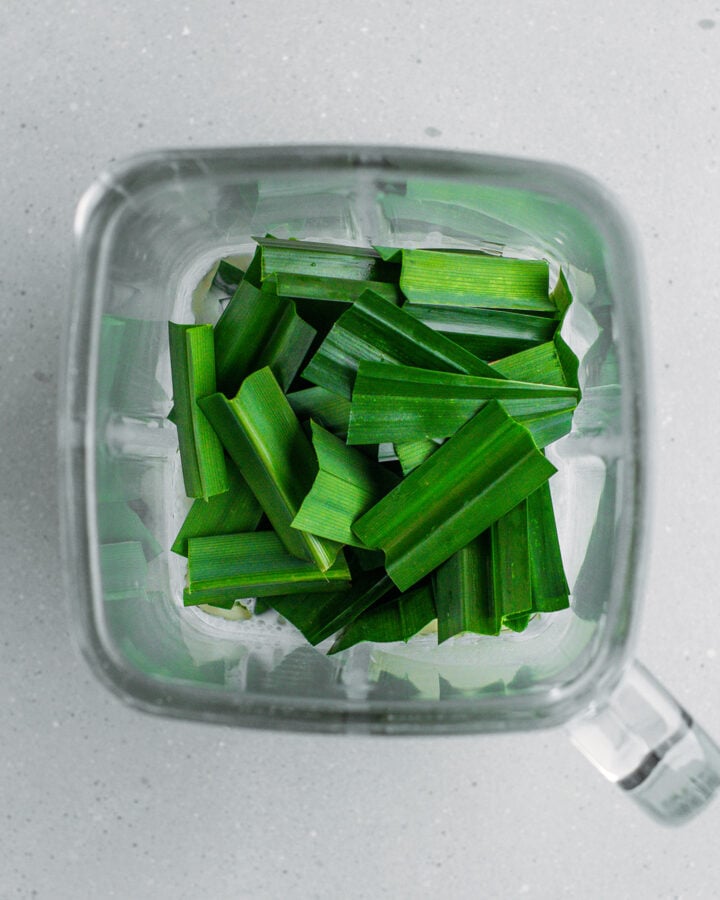
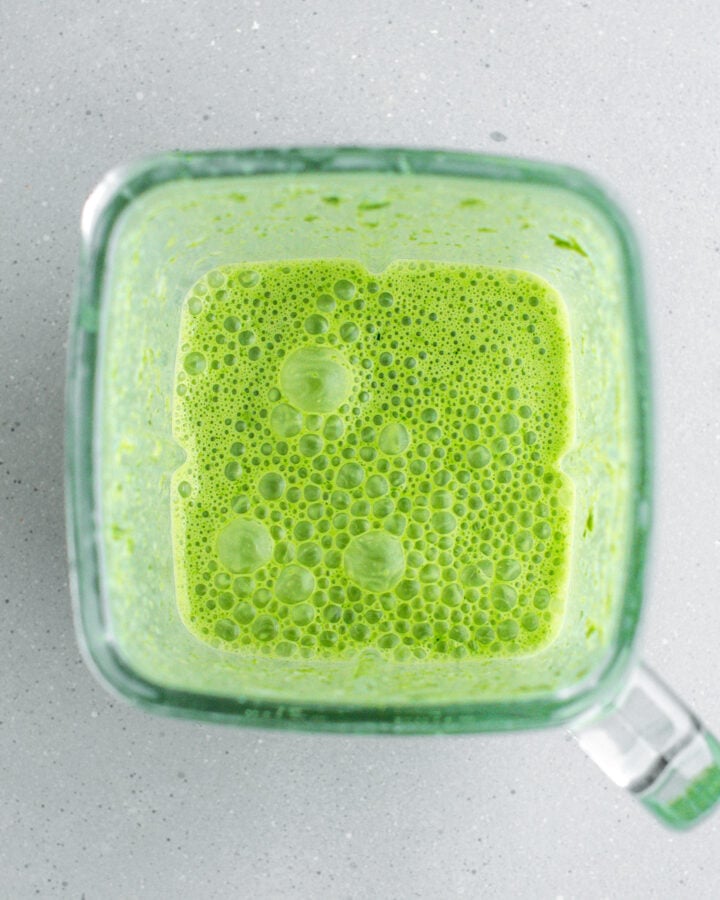
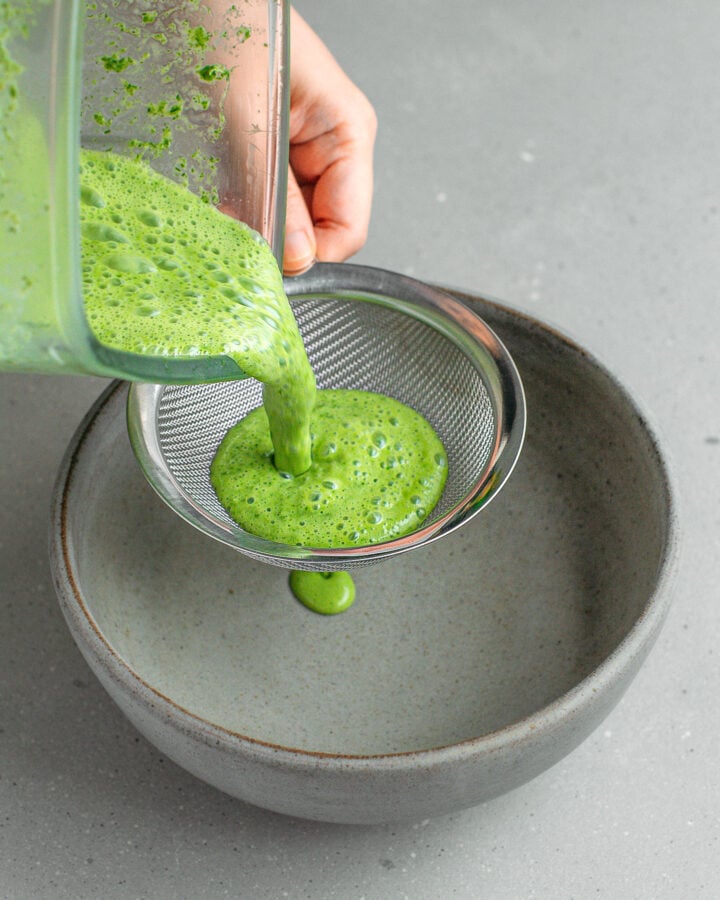
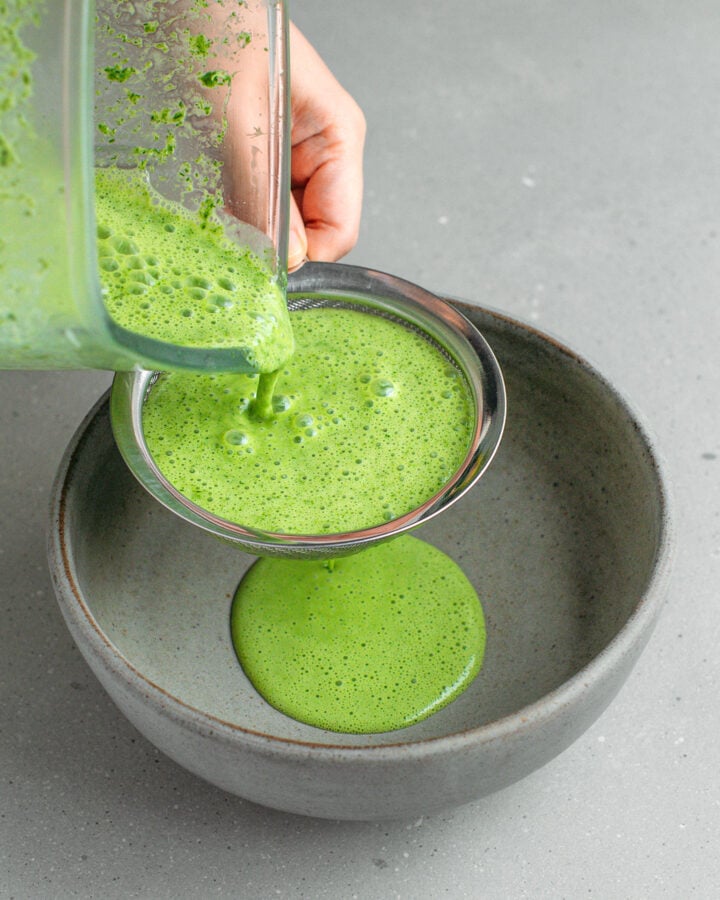
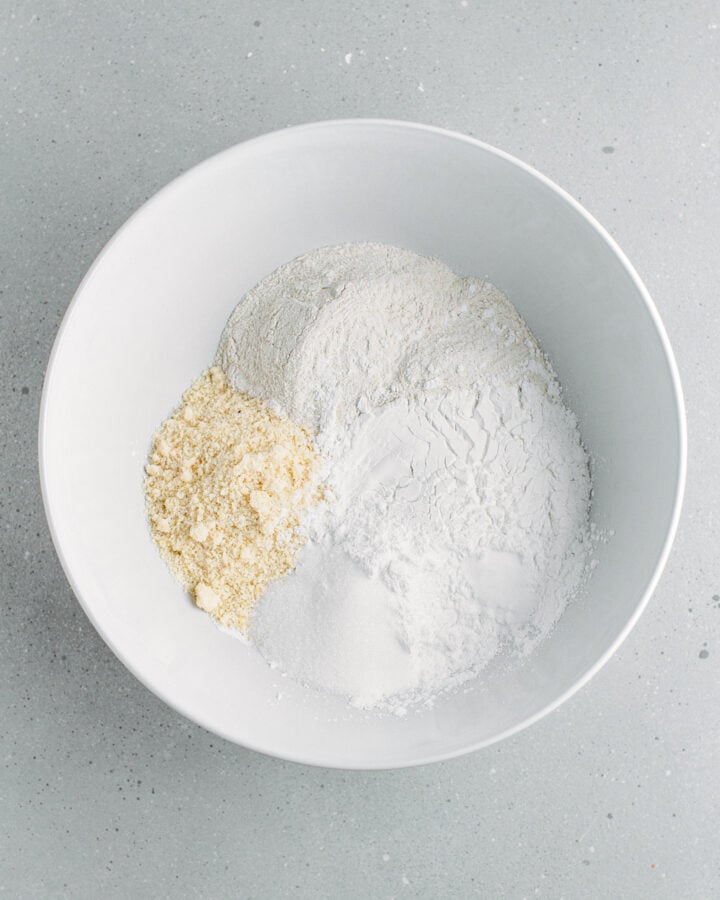
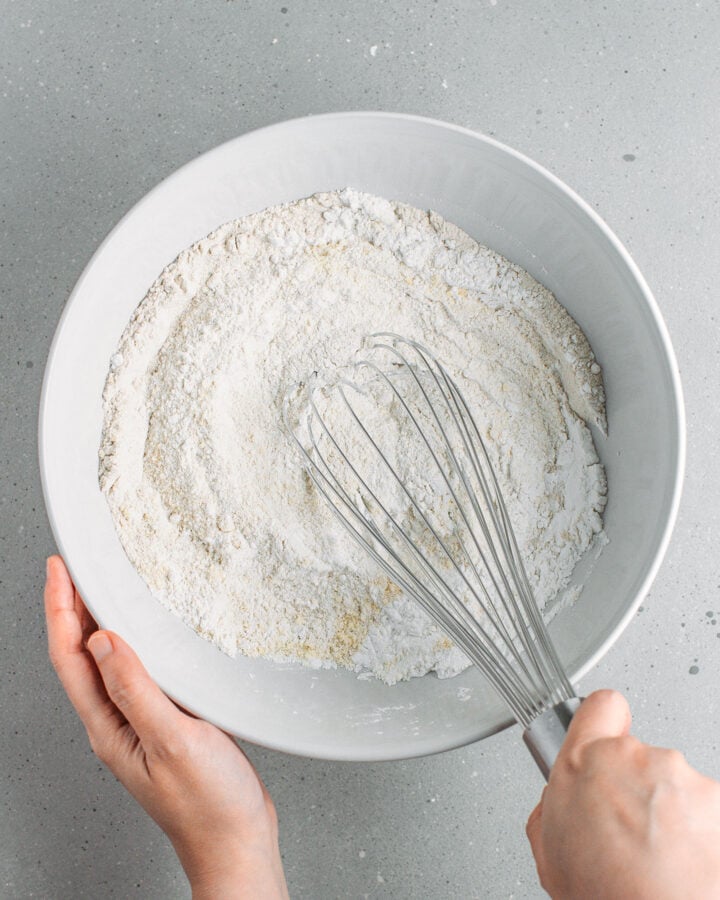
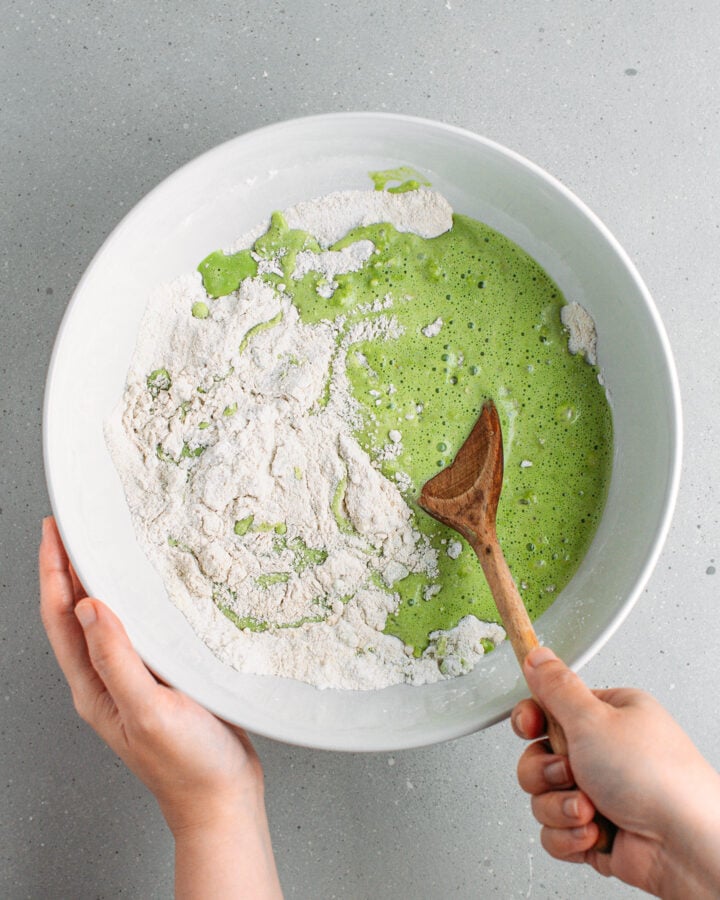
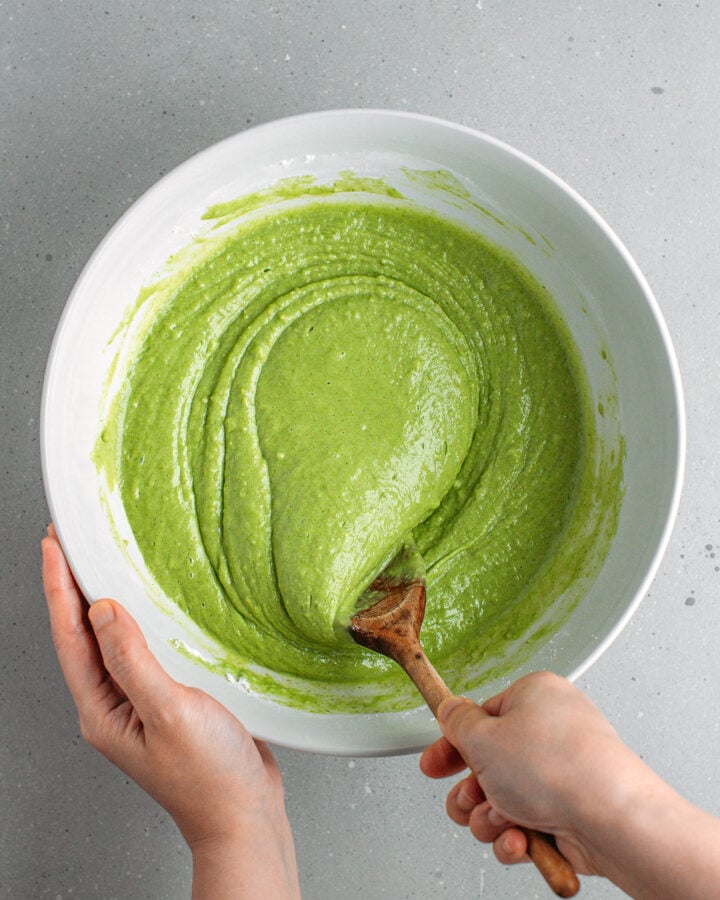

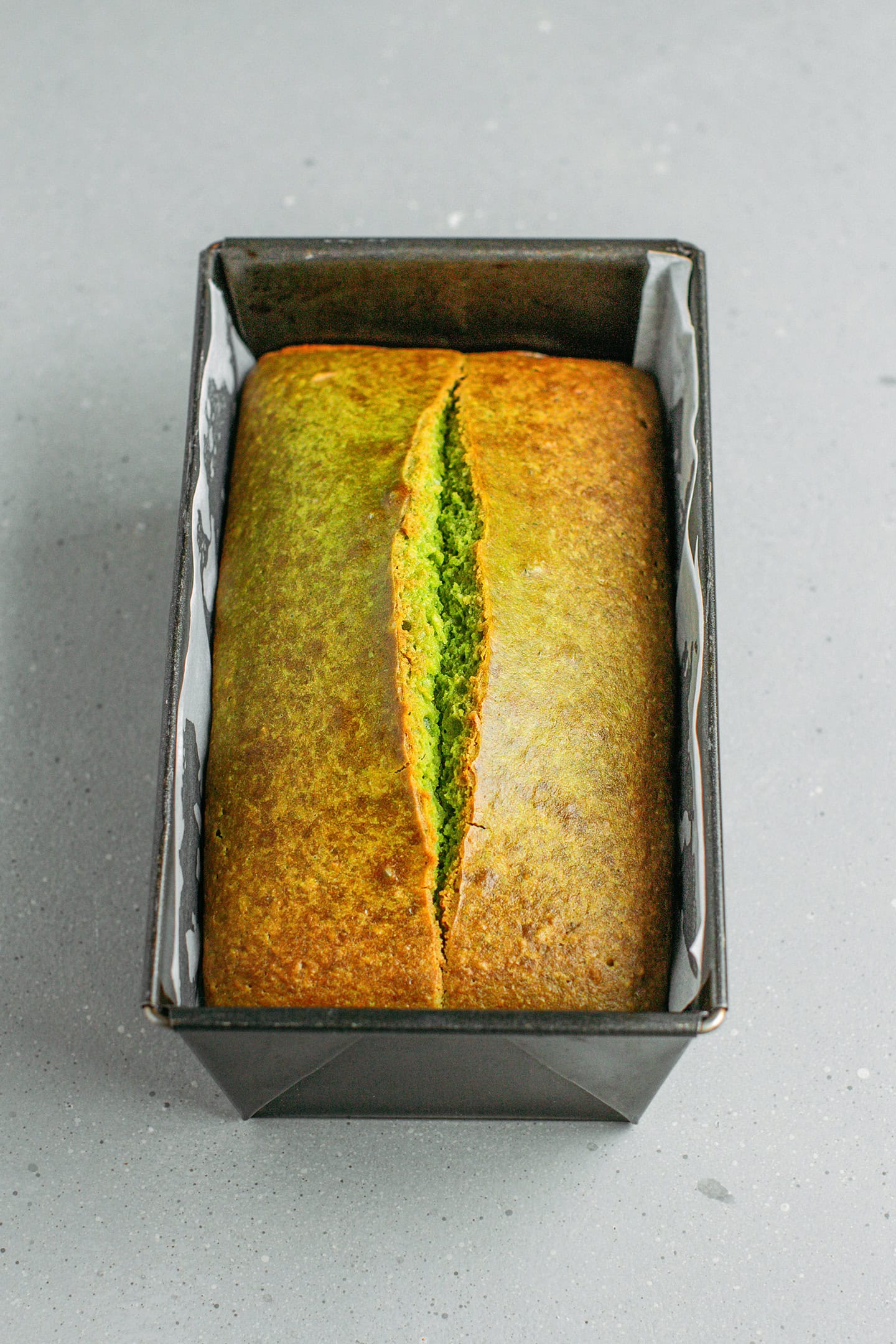
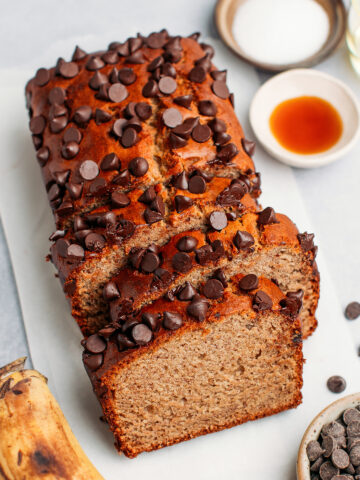



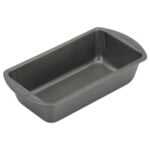
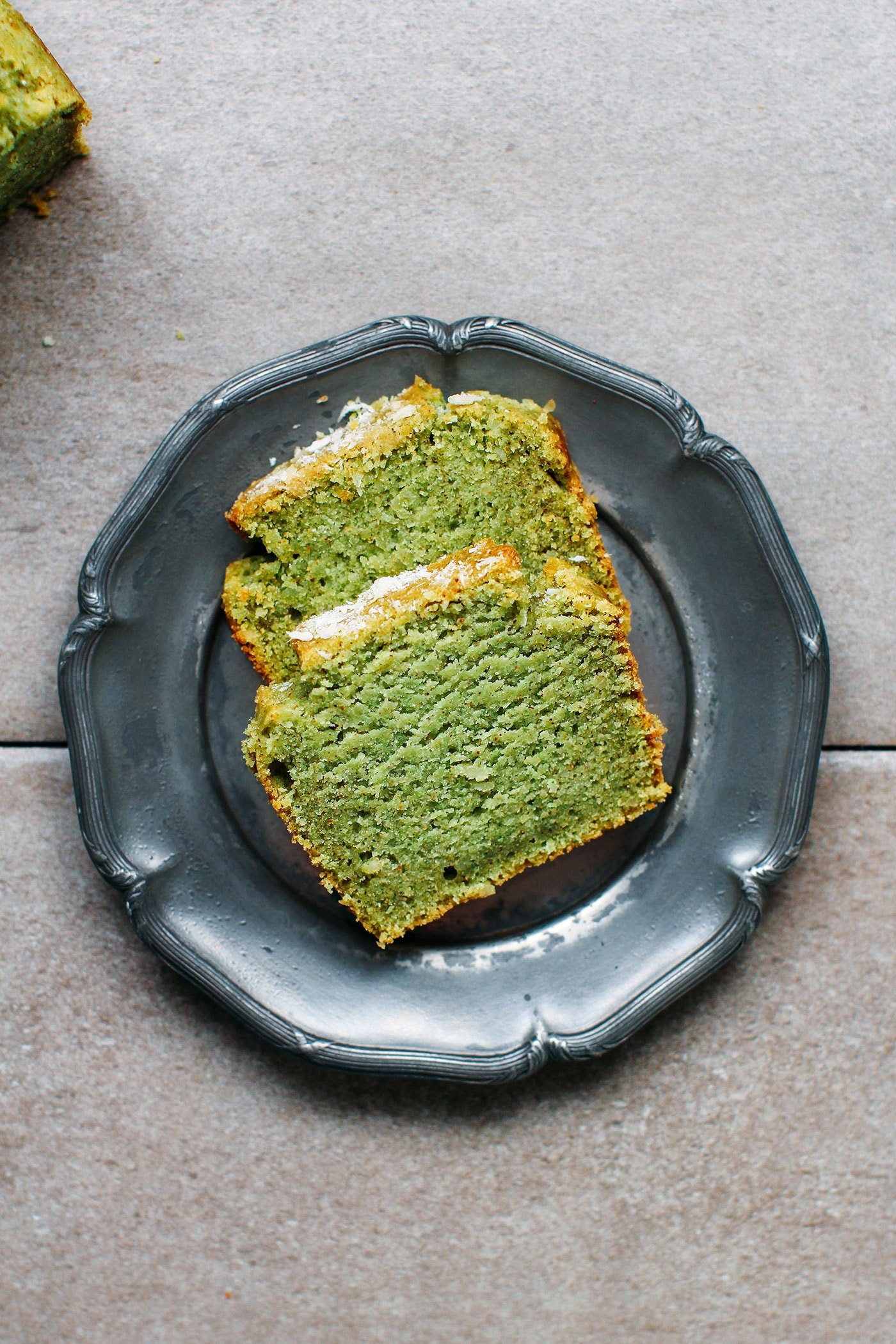
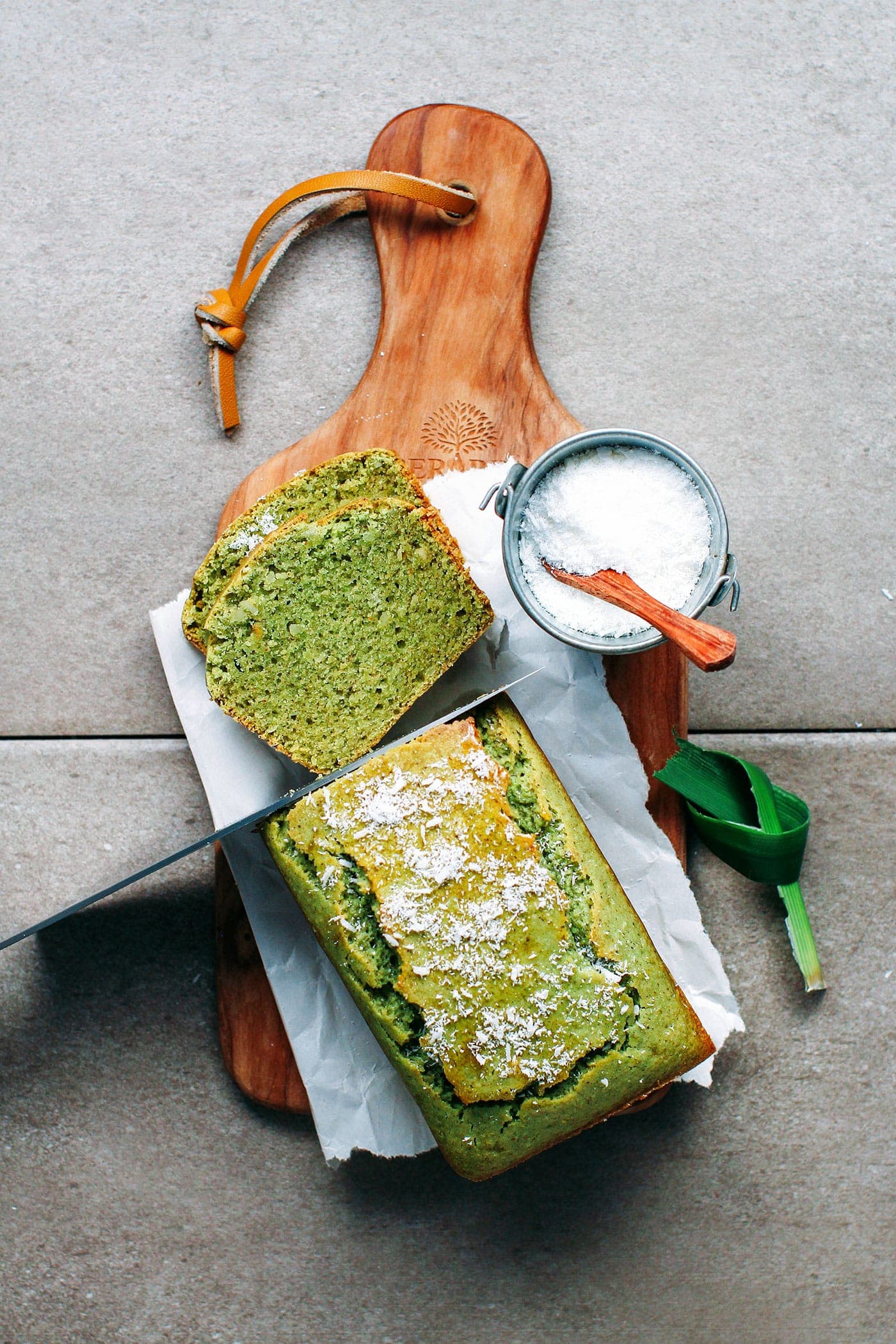
Leave a Comment
This is one of my favorite vegan and gluten-free bread recipes. Thanks for updating it. Love the new photos and instructions!
Hey Thomas, would it be possible to sub the buckwheat flour with all purpose flour? I really hate the taste of buckwheat. I have eyed up this recipe for a long time, and even got my friend from Singapore to bring me pandan leaves all the way to Ireland when she was visiting last month! ( I can’t find pandan leaves anywhere here, even in Asian supermarkets). I so miss pandan from my South East Asia travel days! hope you can help with a suggestion. Many thanks in advance 🙂 Christina
Hi Christina,
I’m afraid I haven’t tried this recipe with all-purpose flour yet. It will probably work but you will need to adjust the amount of flour slightly (as it won’t absorb liquid the exact same way as buckwheat flour).
I’m glad you got fresh pandan leaves, I love the smell of those!
Delicious and easy. Beautifully green. Not too sweet. Thanks for a fantastic recipe.
Glad you enjoyed this pandan bread! Thanks for your feedback April 😉
My husband liked this recipe, despite the fact that I use the wrong type of buckwheat flour. It turned out the color of dark buckwheat because I did not use white buckwheat. You might want to edit the recipe to indicate that white buckwheat flour should be used
Hi Kay,
Sorry to hear you had trouble with this recipe. I will look deeper into it as here, I can only find one type of buckwheat flour, which has a light grey color.
Hi! There is an error in the recipe- 3/4 cup buckwheatflour is not 90gm! Could you please confirm which measurement to use? Thank you!
I’ve made this twice! The second time I used wayyyyy more pandan (almost a whole bag of fresh frozen), and substituted the tapioca flour and some of the buckwheat flour with a 1:1 GF flour blend (Bob’s? I think). The first time I made it it had a REALLY strong buckwheat flavor, like too much, to where the pandan barely came through, and it was not beautifully green like this. I think the issue is that the buckwheat flour I used looks nothing like yours! It is very dark and gritty. Is this a special type of buckwheat flour? It still was delicious both times, but I think the second time was a definite improvement… probably because I really like pandan, and I wanted it to be both green and very flavorful without the buckwheat being overpowering. This time it was a dark muddy green, but definitely GREEN, and it was delicious. Just sharing in case people are trying to use whatever buckwheat flour I used!
That is correct, there are two types of buckwheat flour. I have never seen the dark one but some other readers also got the wrong one.
Does 1/2 tsp just add slight pandan flavor or enough? I love pandan so I want that flavor and aroma to really be there but I don’t want to overdo it. Thoughts on how much the 1/2 tsp does?
Thank you!
It’s enough in my opinion, but if you want a nice and natural pandan aroma I would recommend using fresh leaves.
Tried this recipe but made it non-GF as I didn’t have almond flour and buckwheat flour (so I substituted these with plain flour). However, it did not turn out well! The bread turned out too be overly dense and hard.
Well, I would recommend trying the recipe with the exact ingredients next time, as completely changing the flours also changes the texture.
Hi, was wondering whether there is any alternatives for buckwheat flour? or can i add more of the other flours to substitute?
Hi,
You might want to try oat flour, although I have never tried. Since buckwheat flour makes a big part of the recipe, it’s a bit difficult to replace it without changing the ratio of the other ingredients.
Can I use a mix of almond flour + coconut flour only
In case of using melted coconut oil – I think it might solidify while blending and remain with the pulp, Is it possible to add it after straining the pandan?
I didn’t have that problem, but sure you can add it after straining!
Thank you so much for quick response. I have another question… for rice flour, are we talking about regular white rice flour, sweet white rice flour?… can it even be brown rice flour? Your bread looks so good, Im so going to try to make this. thank you so much!
I’m talking about white rice flour. I don’t recommend using brown rice flour as it will definitely change the texture of the bread and will absorb a different amount of liquid so the recipe would have to be reworked.
Looks Amazing, I’m adding comments again, it seems I put wrong email add…. 🙁
However, is there any subs for tapioca starch? I’m trying to stay away from corn, potato, tapioca starch. Also, can I use frozen pandan leaves instead of fresh, since that’s quite hard to find? Thank you in advance.
Thanks! I would try to omit and increase the rice flour by about 2 tablespoons.
Regarding the pandan leaves, sure you can use frozen!
Looks amazing.
Any alternate for tapioca starch? or can I omit? since I’m trying to stay away corn, potato or tapioca starch. Thank you,
Can you sale this please do it
Sorry I don’t!
Do you have a recommendation for An alternative to almond flour? We have nut allergies and just curious.
I’m afraid I don’t…sorry.
I made some substitutions but was tasty! I subbed buckwheat flour with sorghum flour 1:1, and my pandan leaves were frozen. I used coconut oil in this recipe and I recommend mixing it in later because it separated and got a bit chunky in my Blendtec even though it was melted at first. If I do this again I may do 1.5x the amount of leaves if frozen, and add the oil last. My maple syrup was dark and so was my coconut sugar so the bread was a bit neutral olive in color. Grateful to have come across this recipe!
Glad you still enjoyed the recipe Aluna 🙂 Thanks for your feedback and rating!
Try coconut flour or oat flour
Great recipe I cannot wait to try it. My local Asian Market has the extract but I’m going to check for the fresh leaves cuz I’m sure it would make a difference.
I love your recipes and always get excited when I see your email in my inbox keep up the good work I really appreciate it
Thanks for your kind words Julie 🙂